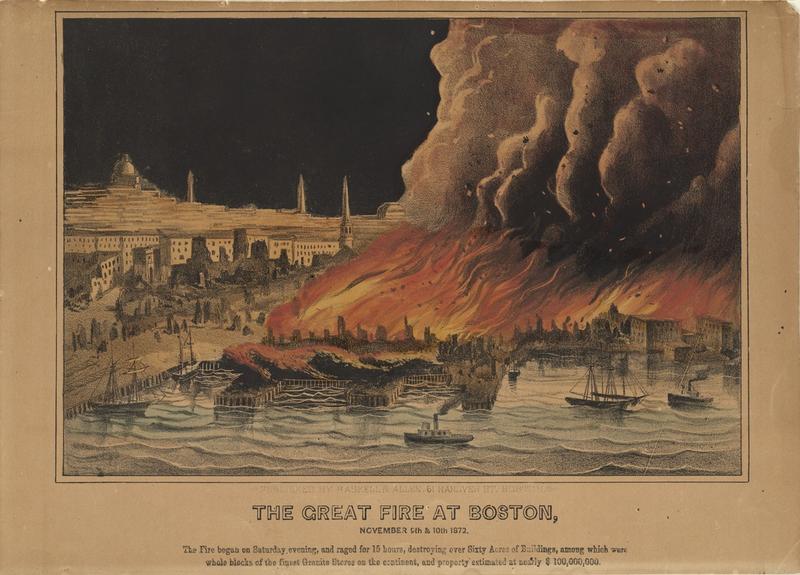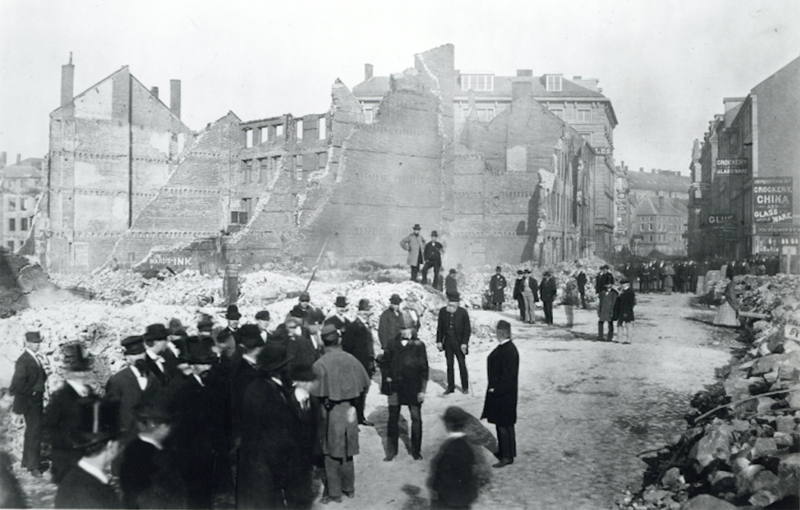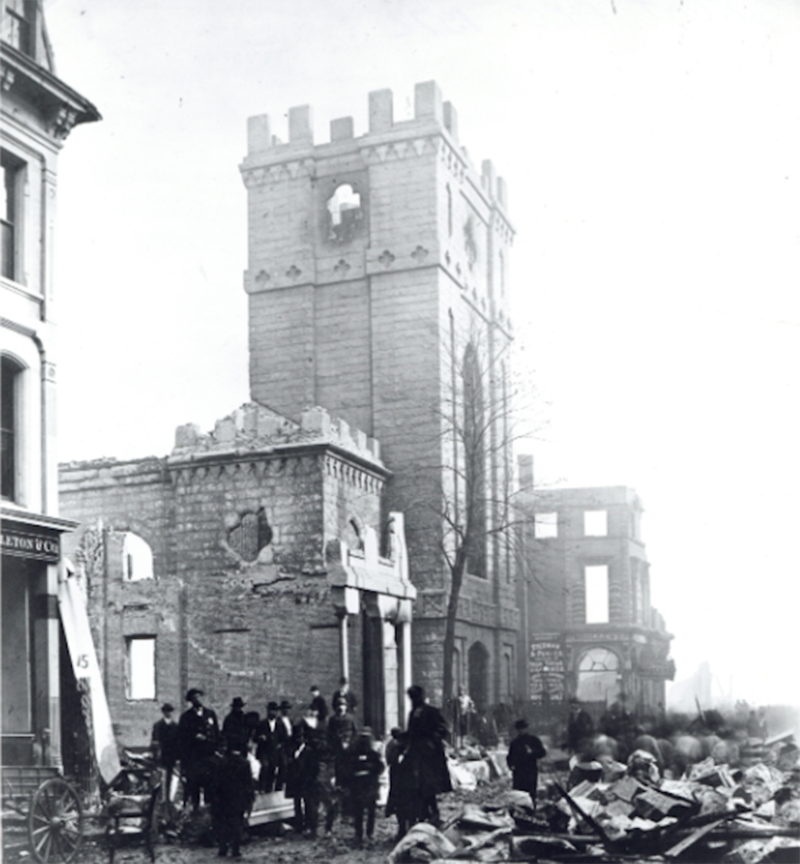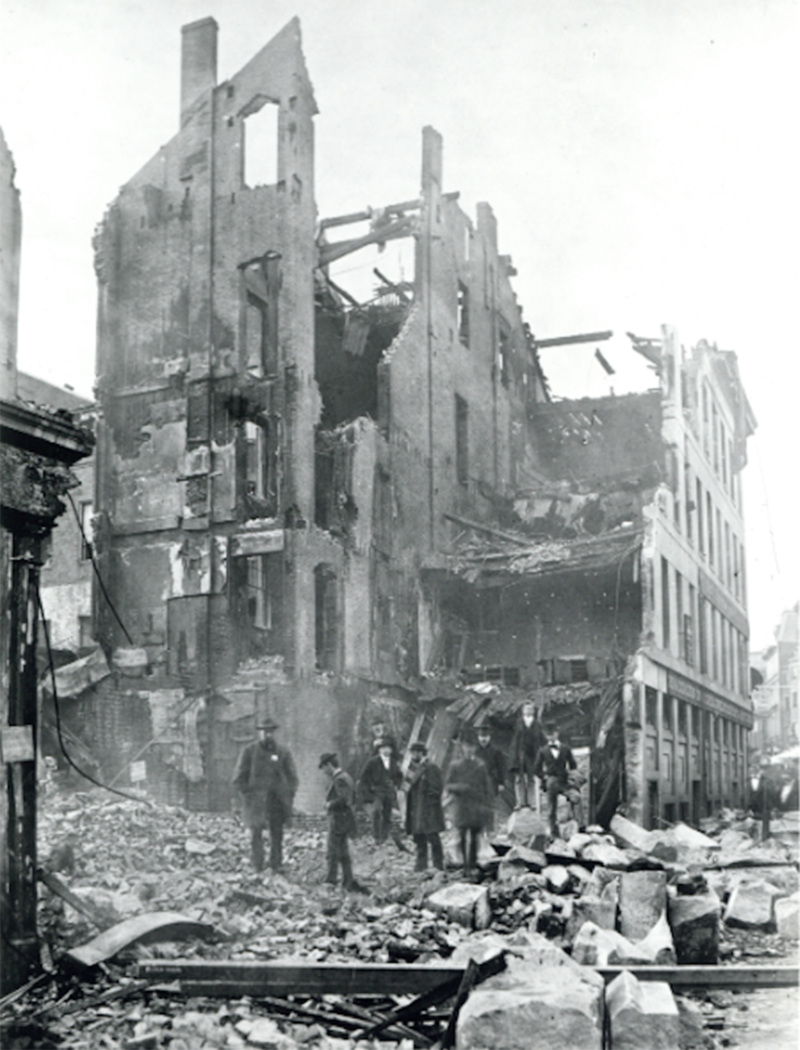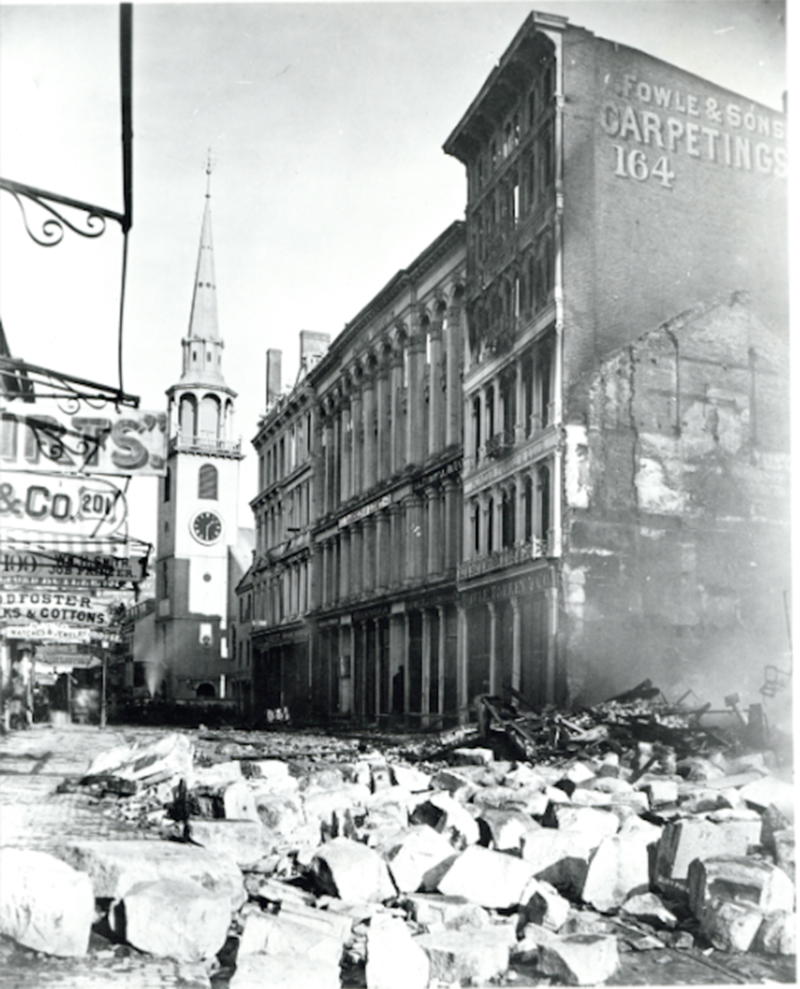Notes from the Archives: The Great Fire of 1872
On November 9, 1872, the Great Fire of Boston destroyed more than 1,000 businesses in Boston’s downtown area.
After the Civil War, Boston's downtown grew rapidly, adding many new buildings and businesses. Infrastructure improvements, however, had lagged behind the pace of new development. In the fall of 1872, among other necessary improvements, Boston's downtown badly needed upgraded water mains. The fall of 1872 also brought an epidemic of epizootic to Boston's horses. This disease affected the horses who worked pulling Boston's fire apparatus.
It was under these conditions, that a fire started at 83-85 Summer Street on the evening of November 9, 1872. At 7:24 pm, the first fire alarm was sounded from Fire Box 52 at the corner of Summer and Lincoln Streets. When firefighters arrived at the address, they found the building almost entirely engulfed in flames.
The fire spread rapidly, producing tremendous heat. Even though many of the buildings in the fire's path were made of stone or brick, most of them had wooden signs, windows, or other wooden features, which caught fire. The flames were so hot that some structures actually melted in addition to burning.
Boston's Fire Department called for help by telegraph, but because telegraph offices had closed for the evening, help was delayed. Despite the delays, almost all of Boston's neighboring cities and towns sent assistance. Help came from as far away as New Haven, Connecticut which sent a steam engine to Boston by railway!
The fire blazed for more than 15 hours. Finally, firefighters subdued the flames by blowing up buildings to limit the the fire’s fuel supply. Despite the scale of the fire, only two Boston firefighters lost their lives. Estimates of civilian deaths are between 11 and 18, depending on the source. The fire devastated Boston's downtown. The images below were taken by Boston City Hall to document the damage.
In the wake of the fire, blame for the blaze fell on Boston’s Fire Chief John Damrell. Damrell had actually warned City officials that Boston was at risk of a catastrophic fire and had attempted to take preventative measures. After a visit to Chicago after Chicago’s Great Fire of 1871, Damrell had asked Boston’s officials to improve the City’s water mains and take other steps to prevent a similar fire in Boston. His arguments for improved fire fighting tools fell on deaf ears. Though he had warned the City that a serious fire was imminent, Damrell was widely blamed for the fire. He lost his job as the City’s chief fire engineer in 1874 when he was replaced by the Board of Fire Commissioners. Damrell continued to work to prevent catastrophic fires, and spent the rest of his life working to implement a national building code. He also served for many years as the commissioner of the Boston Building Department.
Want to learn more about the Fire of 1872? Check out these resources:
- Great Fire of 1872 from the Boston Fire Historical Society
- Address concerning the Fire of 1872 by John Damrell
- Report of the Fire Commissioners on the Great Fire of Boston

